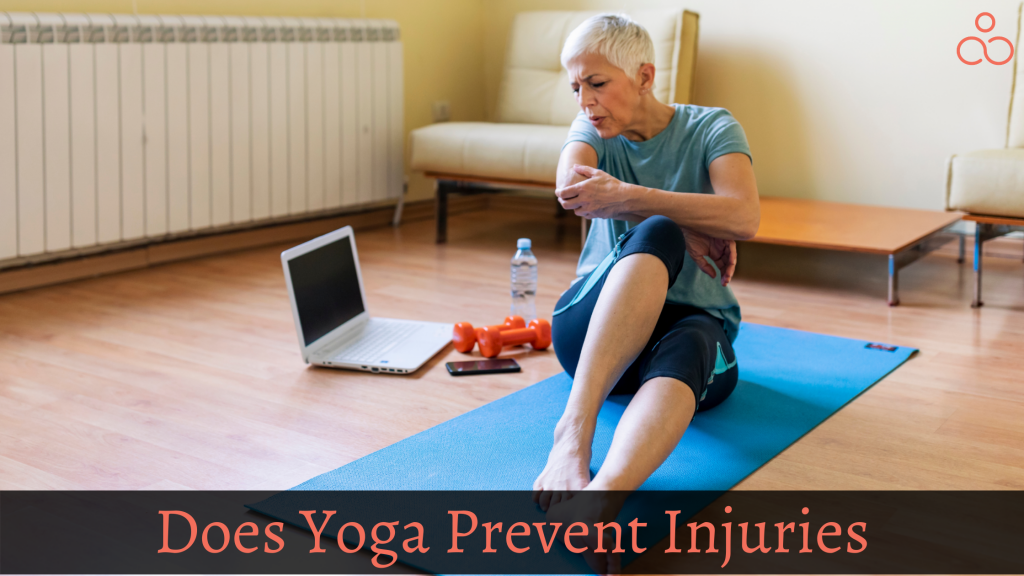The human body is amazing. It takes a lot of abuse day after day but still amazes with its capabilities. However, the complex yet spectacular body is often prone to injuries. Sports, physically demanding lifestyles, sedentary lifestyles, improper postures, or even lack of care while moving can sometimes cause a sprain or injury. While professional athletes are often on the lookout for ways to prevent injuries, others can benefit from some extra care, too. Whether you wish to increase your strength or gain some flexibility, Yoga can help you achieve your goals while protecting you from injury. Additionally, it can also help to accelerate the healing of your existing injuries. So, does Yoga prevent injuries.
How Yoga plays an important role in injury prevention?
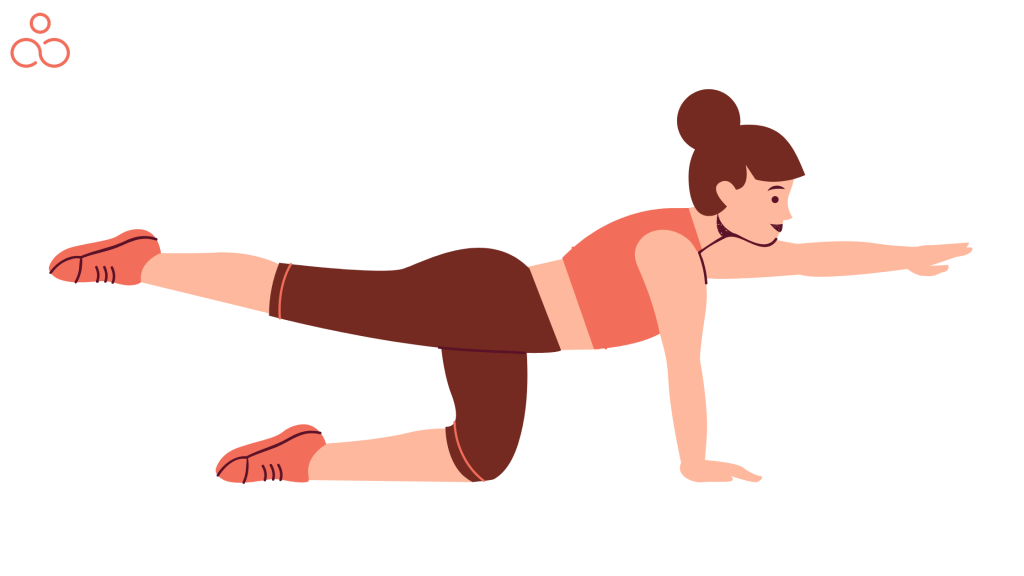
Injuries can occur due to a variety of reasons in life. The most common ones are overexertion or doing more than the body can handle. Preventing injuries is all about being proactive. One way to avoid injuries is to stay clear of workouts altogether, whereas another is to incorporate Yoga into the routine and reduce the risk of injury. Yoga plays an important role in injury prevention for the following reasons:
- Increased body awareness: Regularly practicing Yoga increases body awareness. Apart from increasing the range of motion of joints, it also helps to know how much you are capable of. Being aware of body capabilities and limitations makes it easier to identify if there is an imbalance. This helps to avoid injuries.
- Better flexibility: An increase in body flexibility is among the most striking benefits of Yoga. You can now bend and twist more without any injuries. Though there is a misconception that only flexible people can do Yoga, you need to understand that it’s vice versa. You can improve your overall flexibility by including Yoga in your regular fitness routine.
- Better muscular strength and bone health: Yoga practitioners who hit the mat regularly see a significant improvement in their spinal alignment and muscle strength. Yoga also helps to strengthen ligaments and tendons and reduces injury risk. Yoga is popular as it helps improve your functional strength making it comfortable for you to conduct your day-to-day activities.
- Improved balance and agility: Better balance and agility can help to reduce falls or sudden twists and trips. This is important whether you are actively involved in sports or not. You can improve your overall neurological functioning with a gradual progress of learning how to balance on your single arm, leg, or even a headstand.
- Increase in strength: Strength training is very important to lose weight, improve athletic performance, and maintain muscle tone. However, many people do not pay attention to strength training. Yoga is a holistic routine that has also been labeled good for strength training.
- Better symmetry in the body: Athletes often train their body parts based on the sport they are involved with. However, this leaves the other parts unworked. For instance, runners have powerful leg muscles but may not have a powerful upper body. Similarly, non-athletes may feel that some parts of their body are stronger than others, for instance, having a dominantly strong side. Yoga can help to achieve balance and symmetry and strengthen the entire body.
- Prevention of motion injury: While muscles can be strengthened only by challenging them repeatedly, these repeated motions may also cause injury due to overuse. Yoga sequences have varied movements that help to switch between parts and avoid overstressing. This variety also prevents motion injury.
Health Benefits of Yoga
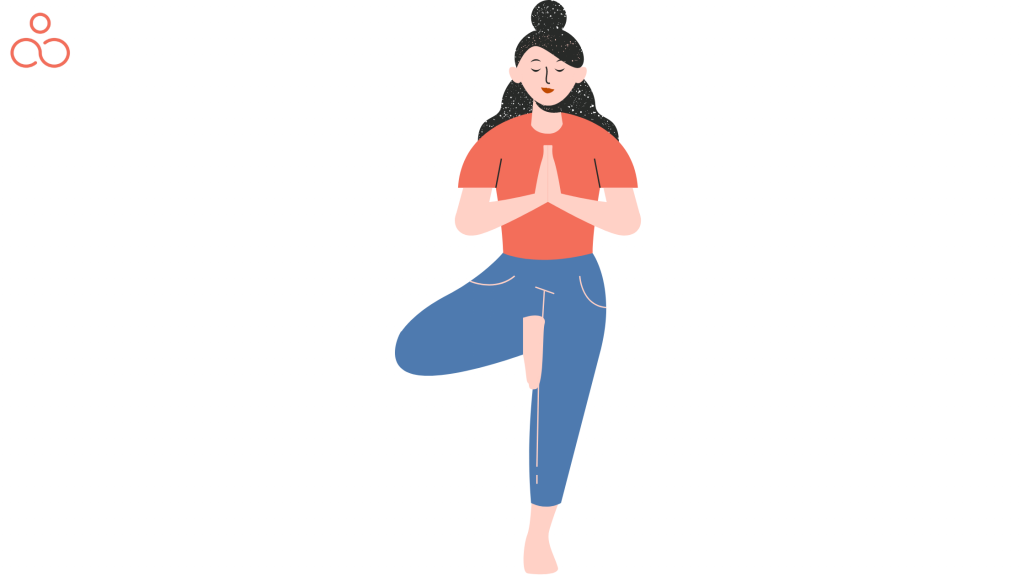
Among the numerous health benefits of Yoga, injury healing and prevention are the most significant. Yoga also helps to relax and improve overall health. It is a great addition to any workout or training routine. Everyone can benefit from Yoga and it doesn’t need the practitioners to maintain a certain shape to perform Yoga. It is a combination of poses and breathing techniques that helps to burn calories and also improves aerobic capacity.
Does Yoga prevent injuries while playing sports?

The common consensus about Yoga is that it is a workout regimen that combines exercise and meditation to create a holistic routine that helps to improve physical as well as mental health. However, over the past few decades, Yoga has become a go-to regimen for sportspersons to improve their performance and reduce injuries.
Even people who hit the gym regularly for weight training are incorporating Yoga in their weekly routines to reduce stiffness in their muscles, relieve pains in the bones and joints, and avoid serious injuries.
Apart from improving flexibility, balance, and strength, Yoga also ensures overall well-being and helps to resolve bone and joint issues such as carpal tunnel syndrome, arthritis, and tennis elbow.
The possibility of injuries while performing Yoga
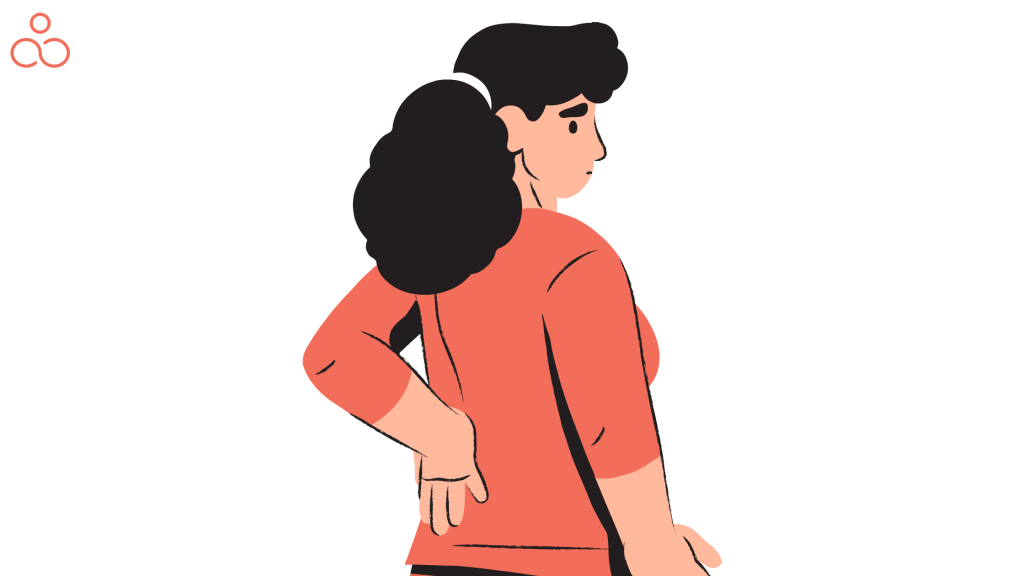
Practitioners must remember that caution is necessary even while performing Yoga poses or they may end up with pain, muscular injuries, or sprains. Some common Yoga injuries are caused due to overstretching or excessive strain. So, while Yoga is a great way to improve body awareness and flexibility and avoid injuries, it cannot be dealt with carelessly. One has to be mindful of postures and avoid jumping to complex poses too fast.
Some tips to prevent injuries while performing Yoga are below:
- Get a go-ahead from your healthcare practitioner before starting Yoga
- Inform the Yoga instructor beforehand if you have any pre-existing conditions or injuries
- Choose a credentialled and experienced Yoga instructor
- If certain poses seem too complex, perform the modified versions till you are comfortable with the complexity
- Among the multitude of Yoga forms, choose one that suits your needs and skill level the best
- Choose an appropriate class level, do not opt for an advanced Yoga class if you are a beginner
- Wear specific Yoga apparel in the right size so it doesn’t hinder movement
- Warming up and cooling down are important for all exercise types, including Yoga
- If you do not understand your trainer’s instructions, clarify your doubt instead of doing the pose wrong
- Do not stretch beyond your limits; build up slowly to the complex poses
- Drink water before, while and after the class to stay hydrated. Some Yoga forms, such as Bikram and hot Yoga, dehydrate you faster than the other forms
- Take a break if you are feeling pain or discomfort
- Use Yoga props such as bolsters, blocks, straps, etc. for better support and ease of performing the poses
- Perform Yoga 3-4 times a week and add some strength training on the other days. A varied exercise routine is a great way to prevent injuries
- If a particular Yoga form seems too intense, switch to a different form that seems easier
- Do warm soothing soaks after your workouts to relax your muscles. Epsom salt soaks can help to relieve soreness soon
- Never compromise on your sleep, as that is the only time when your muscle tissues heal and rebuild
- Intense workouts can make you lose important minerals like calcium, magnesium, and potassium through sweat. Foods and drinks rich in these minerals can help you refuel after your workouts
Common injuries and Yoga poses to relieve them!
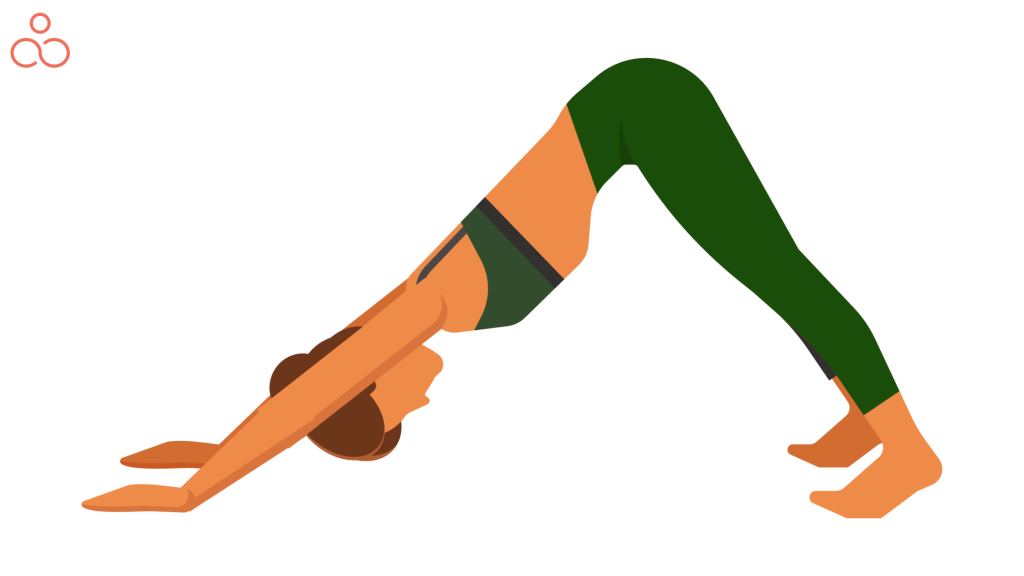
Plantar Fasciitis: This is one of the most common sports injuries. This affects the feet. Plantar Fascia is a tissue band in the sole that runs from the heel to the toes. Improper footwear and repetitive foot strikes can cause inflammation in the plantar fascia, thereby leading to intense foot pain. Other reasons for plantar fasciitis include stiffness in the ankle and calf muscles and the Achilles tendon. Not paying attention to plantar fasciitis may lead to knee, back, and hip pain.
This condition is common in runners, sportspersons and also non-athletes because of improper or hard footwear. The condition makes it difficult to even set feet on the ground immediately after waking up.
Yoga poses to prevent and heal plantar fasciitis: The poses below are known to be effective for relief from plantar fasciitis. They help to stretch the tissues on the back of the leg and the soles of the feet and thus reduce the pressure on the plantar fascia. Doing these poses once a week can help to prevent plantar fasciitis. If you have already got the injury, it makes sense to do them every alternate day.
- Sole stretch: Take a position with your hands and knees on the floor and turn your toes inward. Slowly take your hip weight backwards and sit on the heels. Start the pose by placing the palms on the ground in front. Keep sitting back and increase the weight on your hands. Once you are comfortable with this, move to sitting upright with your palms in your lap. Put all your weight on your heels. Inhale and exhale normally and hold the pose for 30-90 secs. You will feel a deep stretch, but make sure that it doesn’t feel painful.
- Reclining Hand-to-Big-Toe Pose: Also known as the Supta Padangusthasana, this Yoga pose helps to stretch the hamstrings and all the tissues running from the back of the thigh, hip, and calf. Lie down with your back on the ground and put your right foot into a strap. Now stretch your leg up. Hold the strap with both your hands and keep your head and shoulders on the floor. If this seems too difficult, you can bend the left leg and keep the foot on the floor. Push the strap with the ball of the right foot while remembering to keep the thigh close to the belly. It is ok to bend the right knee if that helps with getting the pose right. Hold the pose for 1-2 minutes before moving to the other side.
- Eye-of-the-Needle Pose: Intense running or long hours of sitting may lead to tight hips. This condition doesn’t allow the leg muscles to move and thus all the pressure is on the back of the leg. This strains the plantar fascia and causes pain. The eye-of-the-needle pose is an effective way to fix tightness. Lie down on your mat, bend your knees, and place your feet on the wall. The next step is to place your right ankle on your left knee followed by flexing your right foot. Give a gentle push to your right thigh using your right hand. While pushing, your right hand should touch a bit above the right knee and the direction of push should be away from the head. Place the hips, head, and spine on the ground and keep the neck relaxed. Increase the complexity of the pose by taking a position closer to the wall or decrease it by moving away. Deepen the stretch by joining your hand at the back of the left hamstring and bringing it toward your body in a hugging position. Maintain the head on the ground. Repeat the pose on the other side after holding it for 1-2 minutes on one side.
Iliotibial Band Syndrome: This is a condition that commonly affects the knees of athletes. Its common symptoms include outer knee pain that can eventually affect the knee or the area below the outer calf, or hip. It is also characterized by sounds while moving the knee or knee swelling. The iliotibial band is a stretch of fascia that goes from the top of the outer hip to the bottom of the outer knee. While several ill-informed trainers will advise you to stretch the iliotibial band to fix this, it is just a misconception that stretching will work. The pain is primarily due to the surrounding muscle and not the band which is just a fibrous sheet. Tightening of the hip muscles connecting to the IT band often causes stress in the bank. Many times the knee movement may be compromised because the IT band is unable to glide over the thigh muscles. If your body has reached this state, running or walking may cause friction and lead to the thickening of the tissues. This will pull on the knee as you run or walk and cause pain. This type of injury is common in tennis, basketball, and soccer players. It also affects runners, hikers and cyclists.
Yoga poses to prevent and heal Iliotibial band syndrome
The Yoga poses below can help to stretch the hip and thigh muscles that pull on the iliotibial band. Thus, they can help to maintain flexibility in the band and the surrounding tissues and reduce the risk of injury.
- Standing Forward Bend: Also known as the Uttanasana, the standing forward bend stretches the hamstring at the point where it meets the IT band. To perform this Yoga pose, take a standing position and take your left ankle over the right. Bend the knees slightly and keep your hands on the ground, a chair, or a block. This will require you to fold forward. Point your sitting bones upward to the sky and avoid rounding the back by moving ribs away from the pelvis. Inhale and exhale normally for about a minute and repeat with the right ankle over the left.
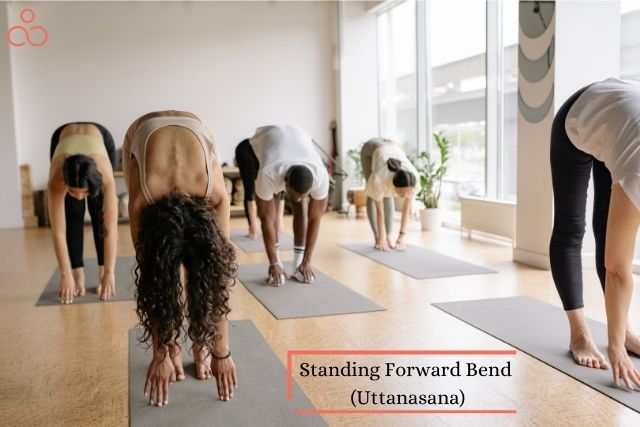
- Low Lunge: The low lunge Yoga pose is also known as the Anjaneyasana. It helps to stretch the tensor fasciae latae that lies at the top of the iliotibial band and is generally difficult to reach. Place your right leg forward and get into a low lunge position. Raise the hips and take them back till they are over the knee that is placed on the floor. The pose leans the pelvis toward the front and stretches the hip flexors. However, you can perform the low lunge with a variation by placing the hips over the back knee and moving the front foot back if required. Do not over-arch the lower back and keep the right hand on the right thigh. Stretch the left hand above the head toward the right. You will experience the stretch in the outer hip of the left leg. Hold the pose and breathe normally for 30-60 seconds before repeating it on the other side.
- Supine Cow Face Pose: The Supta Gomukhasana or the supine cow face pose helps to stretch the gluteus maximus muscles. These muscles connect to the IT band. Lie down on your mat with your back on the floor and cross your left knee over the right knee. Keep the head on the floor and take the knees toward the chest in a hugging position. Maintain the pose if you are feeling a good stretch. If there is no significant stretch, flex the feet and hold the ankles to pull them toward the hips. Hold the pose for 1 minute and repeat with the right knee crossed over the left.
Rotator Cuff Inflammation or Tear: This is a common shoulder injury that affects hand and shoulder mobility. The rotator cuff refers to a set of four muscles that help to keep the upper arm bone stable in the shoulder socket. It is also responsible for the rotation of the shoulder. It is common for the tendons of either of the 4 muscles to get irritated and tear due to an injury. Repetitive and rigorous movement may also cause this tear or inflammation. The probability of injury increases when the muscles that keep the shoulder blade stable and anchor the rotator cuff are weak. Swimmers, yogis, golfers, tennis players, and rock climbers often struggle with rotator cuff injuries. It is characterized by pain in the top of the shoulder or pain around the shoulder joint that includes the armpit or shoulder blade.
Yoga poses to heal and prevent rotator cuff inflammation
Some Yoga poses can help to strengthen the muscles around the shoulder joint. Performing these poses can help to restore the range of motion in the rotator cuff. These poses allow you to get a stronger and more supportive structure that reduces the risk of injury or helps to recover faster.
Cow face pose: The Gomukhasana helps to rotate the arms internally and externally and allows stretching of the entire rotator cuff. If you are experiencing tightness in the shoulders, performing the pose in a warm shower can help you to do it easily. It is also a good idea to hold a strap if it is difficult to reach the hands. You can perform the pose in both sitting and standing positions. Extend the left hand straight toward the left and ensure that it is parallel to the ground. Now rotate it inward in a way that the thumb turns toward the floor first. Now point with the thumb to the wall behind with the palm facing up. As a result of this movement, your left shoulder will roll up and forward and your upper back will be rounded. Breathe out completely and sweep the arm behind the body to place the forearm in the lower back. Place it in the hollow of the lower back and ensure that it is parallel to the waist. The left elbow should rest against the left side of the body. Maintain a back-and-down rolling motion in the shoulder and then take the forearm up the back to keep it parallel to the spine. In this position, the back of the hand will be midway from one shoulder blade to another.
Breathe in and extend the right arm outward to keep it parallel to the ground. Turn the hand to face the palm toward the ceiling, breathe in and extend the arm straight up. Now bend the elbow and try to reach the left hand. Hold hands if possible. If you are unable to do so, do it with a strap or towel in the hand that is overhead. Hold the pose for a minute before repeating it on the other side.
Plank pose: This variation of the plank pose helps to strengthen the muscles stabilizing the shoulder blade. Doing so will help to make the foundation of the rotator cuff strong. Start in a tabletop position. Breathe out and take your rib cage down to the floor while taking the shoulder blades toward each other. Keep your elbows stable and avoid bending them. Now breathe in, push the floor and take the rib cage away from the floor. Take your shoulder blades apart and do not round your spine as you do that. Once you have figured out the movement, get into plank pose and repeat the movement there. Imagine that your shoulder blades are swaying toward and away from each other around the bony basket. Repeat 10 times before taking a rest for a few breaths. Repeat the process. As your muscle strength slowly increases, try to reach 15-20 repetitions.

FAQs
How can Yoga prevent injuries in the IT Band?
Design your Yoga routine in a way that there are adequate hip openers and poses that stretch the hamstring and quadriceps. This will help to reduce the tension in the IT band. Foam rolling is also a helpful technique to reduce tension. The friction is maximum in the area between the IT band and the quadriceps. A good way to reach this area with the fold roller is to imagine the thigh as a shoe box. The front of the thigh is one side of the box and the outside is another. Use the foam roller midway from the front and outer thigh where the corner of the shoe box would be.
How relaxation can help to prevent injuries?
During Yoga practice or everyday chores, concentrate on keeping your shoulder blades relaxed down your back. If your upper back is tensed, the humeral head will shift higher in the shoulder socket and lead to wear on the top of the rotator cuff. If you have a desk job, regular stretching breaks can help to reduce the tension in the shoulder, neck, and chest muscles. If you are a regular Yoga practitioner, request your teacher to check your alignment to ensure you do not overwork your rotator cuff.
How does Yoga improve sports performance?
Yoga is the right mix of isometric, dynamic, and static movements. It can significantly improve athletic performance and prevent injuries. Since it also benefits the brain and the respiratory system, practitioners can focus better on their sport and control their breath. It speeds up recovery after sports and workouts by reducing the inflammation in the muscles. It also reduces the possibility of injury due to pulls and strains. Yoga also increases oxygen flow throughout the body and brain and helps to control performance anxiety. It is a full-body workout that reduces tension in all parts and prevents one strained part from affecting the others.
Is Yoga apt for professional athletes or not?
There is a common misconception that Yoga is a light form of exercise for non-athletes. However, many professional athletes use Yoga as a way to prevent injuries. They use it to extend their athletic careers and improve their performance by keeping injuries at bay. An increasing number of professional sports persons are resorting to Yoga every year. Some professional sports where you can see Yoga as an important part of the routine include basketball, baseball, tennis, and football.
The New York Giants have mandated all players and rookies struggling with injuries to incorporate Yoga into their routine.
Popular football player Tom Brady who has been achieving better at the age of 43 than he did at 41 credits Yoga for the improvement in his performance. Similarly, football player Ryan Gibbs from Manchester United is doing wonderfully in his 40s and credits Yoga.
These are just a few examples; there are many more that go on to show what Yoga can facilitate.
Conclusion
Yoga is a great way to prevent and heal injuries and thus one must incorporate it into their workout routine to benefit their sport. Proactively including it will help to improve athletic performance and stay injury free for longer. Additionally, it will also unlock a series of other health benefits that will improve longevity.

